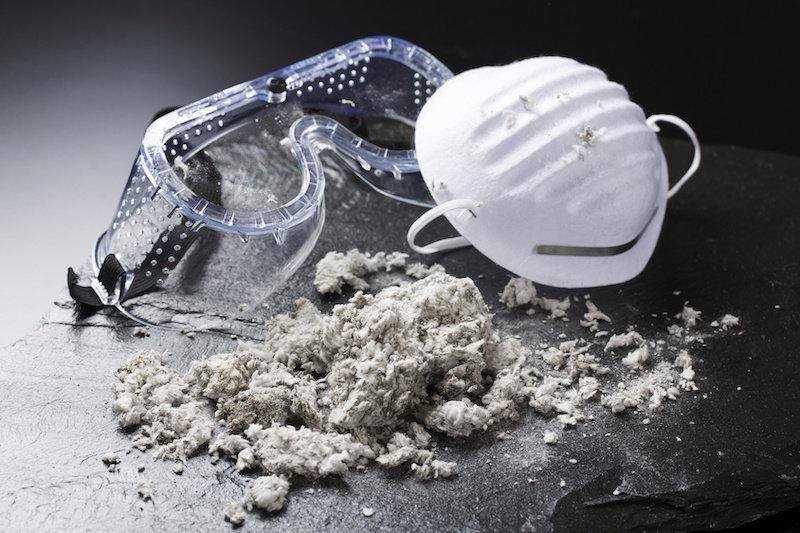Asbestos (rock flax) is an extremely hazardous material associated with all types of health problems, including mesothelioma, lung cancer, and chronic respiratory diseases.
Homeowners are often unaware that there is asbestos somewhere in the home. This substance can hide in various building materials for a long time, and residents can learn about its existence after being exposed to harmful effects.
Leftover asbestos fibers end up in foods and products and usually do not pose a health hazard. But when the material around them breaks down, the fibers are carried through the air and can enter the lungs, causing diseases like mesothelioma decades later.
There is no quick or cheap way to remove asbestos from your home. This task can only be performed by a professional asbestos abatement contractor trained in removal and containment techniques.
How to detect asbestos fibers in your home?
The best way to find out if your home has asbestos is to hire a dedicated inspector and do asbestos testing. You can choose Envirofree - they offer asbestos and methamphetamine testing and a range of professional environmental services.
In the course of the work, inspectors collect samples for analysis in the laboratory, evaluate the asbestos material and propose the necessary measures.
How To Fight Against
AsbestosIn order not only to remove asbestos but also to prevent its fibers from spreading throughout the house, inspectors perform a number of actions:
● The material is insulated with a durable, airtight material to prevent damage,
● The asbestos material is sprayed with a sealant that temporarily traps the fibers,
● Small damaged areas such as breaks in pipe insulation are repaired.
● Inspectors completely cover the work area and clean it with a special asbestos vacuum cleaner.
● All air ducts and ventilation openings are insulated, and to prevent particles from entering the air, the material is filled with moisture.
At the end of the work, asbestos is disposed of at a landfill designated for hazardous substances.
Where Can You Find Asbestos?
Asbestos is a term that describes six types of natural minerals: chrysotile, amosite, crocidolite, tremolite, anthophyllite, and actinolite. This substance was once popular for its strength, heat resistance, and insulating properties.
From the start of the industrial revolution in the early 1800s until the ban on a number of products in 1978, asbestos was used to create many products, from refractory materials to gaskets and cigarette filters.
In older homes, asbestos-containing materials can still lurk in the following locations:
● Insulation around pipes and boilers, in attics and between walls;
● Insulation around hot water pipes;
● Decorative and acoustic plaster;
● Cement coatings and asbestos cement;
● Textured ceilings;
● Fire curtain and doors;
● Caulking, putties, and joints;
● Adhesives, including floor tile products and tapes on some brands;
● Walls, siding, roofing materials, and felts;
● Vinyl floor tiles;
● Other dusty products contain asbestos.
By 1978, many materials containing asbestos were banned. However, the substance did not fall under the total ban, and it is still used in the production of materials such as:
● Cement corrugated sheet;
● Roofing felt and coverings;
● Some floor tiles;
● Cement tiles.
Typically, homeowners believe that this hazardous material is completely banned, and therefore are surprised to learn that asbestos can still lurk in their homes and threaten the health of the family. And it is difficult to find out about its presence in materials since they do not have similar requirements for marking.
Asbestos Awareness For Homeowners
To reduce the body's exposure to asbestos, the homeowner should follow a number of guidelines and prohibitions:
● It is necessary to minimize your activity and keep children away from areas with damaged asbestos-containing materials;
● Do not wipe, sweep or pick up materials containing asbestos;
● It is forbidden to make even minor repairs related to insulation;
● It is safer to replace tiles than trying to remove asbestos from your flooring.
If you have concerns or problems with asbestos, you should contact the special organizations that will send a professional to your home. But in no case should you act independently.



 StableDiffusion
StableDiffusion StableDiffusion
StableDiffusion StableDiffusion
StableDiffusion Photo by
Photo by  Photo by
Photo by  Photo by
Photo by 
 Photo by
Photo by  Photo by
Photo by  Photo by
Photo by  Photo by
Photo by  Photo by
Photo by 







